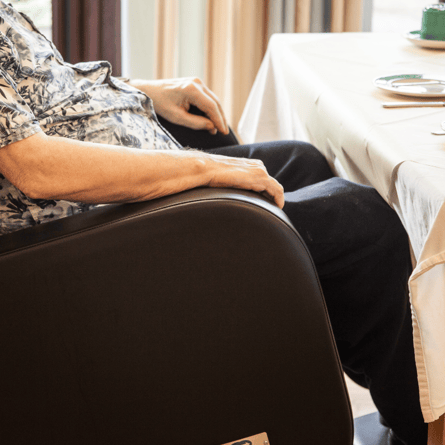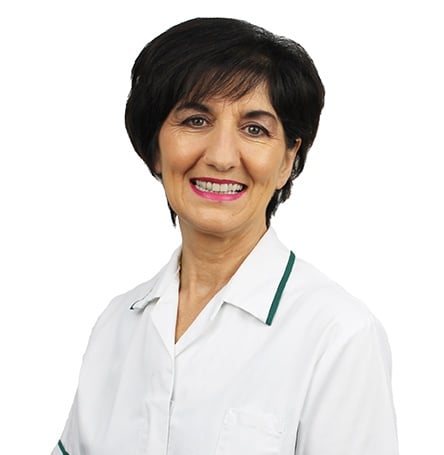Falls and pressure injuries represent two of the biggest causes of preventable injuries which cause pain, distress, waste valuable resources on treatment and which can ultimately cost lives. A strategy promoting injury prevention is vital in all care facilities to reduce the incidence of such preventable problems.
LEARN MORE ABOUT THE WORLD'S PREMIER SEATING RESOURCE
Reducing Preventable Injuries
In hospital wards nurses are facing increasing amounts of pressure during shifts, from limited resources and budgets to inadequate staff levels, bigger caseloads and more paperwork. This can lead to risk of under reporting of the real incidence levels of preventable injuries such as falls and pressure injuries.
Common treatments for conditions such as hip replacements often performed on elderly patients following a fall and sepsis, which can be a fatal complication of pressure injuries, represent two of the top 20 most expensive medical conditions to treat in hospitals.¹
Falls – The Key Facts
The below statistics, although shocking, may fail to tell the true story, falling short of the real number since many incidents are likely to be unreported by clinicians due to many reasons such as work pressure, fear of litigation and simply lacking the time to complete the paperwork associated with the reporting of such injuries.
UK
- Every year, more than one in three (3.4 million) people over 65 suffer a fall that can cause serious injury or death.2
- 246,000 inpatient falls were reported National Reporting and Learning System in 2015.3
- The estimated cost to treat falls is estimated at around £500,000 per annum, per average acute hospital.4
USA
- There are approximately 41 fall-related deaths per 100,000 people per year.5
- In 2015, costs for falls to Medicare alone totaled over $31 billion.6
Australia
- 1 in 10 hospital admissions for older adults were for injuries sustained in a fall.7
- The total hospital costs of falls in a research study were $9.8 million, in a study of 12 hospitals in Australia.7
Therefore, fall related injuries among older adults, especially among older women, are associated with substantial economic costs. Implementing effective intervention strategies could substantially decrease the incidence and healthcare costs associated with these injuries.
Pressure Injuries – The Key Facts
Patient Safety
Care must applied and action must be taken to avoid or reduce the risk of these preventable injuries. Many countries and facilities have a falls prevention strategy, and a "stop the pressure" strategy to focus on reducing the incidence of pressure injuries.
How can Seating Help Reduce Injuries?
 When a patient is sitting in the wrong chair, they can be subject to a higher risk of injury from a fall or from developing a pressure ulcer, also known as a pressure injury. Following a specialist seating assessment and being matched with appropriate seating, the risk factors are greatly reduced.
When a patient is sitting in the wrong chair, they can be subject to a higher risk of injury from a fall or from developing a pressure ulcer, also known as a pressure injury. Following a specialist seating assessment and being matched with appropriate seating, the risk factors are greatly reduced.
Other Injury Prevention Methods
Other equipment and interventions can help in the fight against preventable injuries. Some ideas to help you might include:
- Exercise – building strength, co-ordination and balance.
- Correct Equipment – aside from seating, call bells, falls mats, bed rails, removing trip hazards, better shoes and surfaces.
- Medication review.
- Reporting/Documentation – improving reporting processes. If it’s not written down it’s not done!
- Review/Analyse/Improve – improving reporting of incidence can help to give an accurate picture of what is occurring in your facility. When the problem is accurately measured, steps can then be taken to reduce occurrence.
By reducing falls and pressure injury incidence we are saving lives, saving money and improving care.
You can find out more and sign up to your fall prevention scheme in your country:
- #ImproveFalls Initiative – UK.
- Elder Fall Prevention Act - USA.
- April Falls Month / Stay on your feet - Australia.
SPEAK TO A SEATING SPECIALIST ABOUT USING SEATING TO PREVENT INJURIES
REFERENCES:
-
Bob Herman, Jun 28, 2016, The 20 Most Expensive Medical Conditions Treated in Hospitals, http://www.modernhealthcare.com/article/20160628/NEWS/160629901
- Age UK, Stop Falling: Start Saving Lives and Money. http://www.ageuk.org.uk/Documents/EN-GB/Falls/Stop_falling_report_web.pdf?dtrk=true
- NHSI, July 21, 2017, Patient falls improvement collaborative. https://improvement.nhs.uk/resources/patient-falls-improvement-collaborative/#h2-key-facts-about-patient-falls
- Royal College of Physicians, August 13, 2015, FallSafe resources - original. https://www.rcplondon.ac.uk/guidelines-policy/fallsafe-resources-original
- Currie L. 2008 Apr. Fall and Injury Prevention. Chapter 10. https://www.ncbi.nlm.nih.gov/books/NBK2653/, https://www.ncbi.nlm.nih.gov/books/NBK2653/
- Centers for Disease Control and Prevention. National Center for Injury Prevention and Control, August 19, 2016. Cost of Falls Among Older Adults. https://www.cdc.gov/homeandrecreationalsafety/falls/fallcost.html
- Renata T Morello, Anna L Barker, Jennifer J Watts, Terry Haines, Silva S Zavarsek, Keith D Hill, Caroline Brand, Catherine Sherrington, Rory Wolfe, Megan A Bohensky and Johannes U Stoelwinde. August 2015. The extra resource burden of in-hospital falls: a cost of falls study. https://www.mja.com.au/journal/2015/203/9/extra-resource-burden-hospital-falls-cost-falls-study
- Gerry Bennett, Carol Dealey, John Posnett, June 2004. The cost of pressure ulcer in the UK. https://www.researchgate.net/publication/8621636_The_cost_of_pressure_ulcer_in_the_UK
*Note - the purpose of this blog is to give an overview of the product with some tips to consider on its use. This is not intended to be a substitute for professional or medical advice, diagnosis, prescription or treatment and does not constitute medical or other professional advice. For advice with your personal health or that of someone in your care, consult your doctor or appropriate medical professional.





